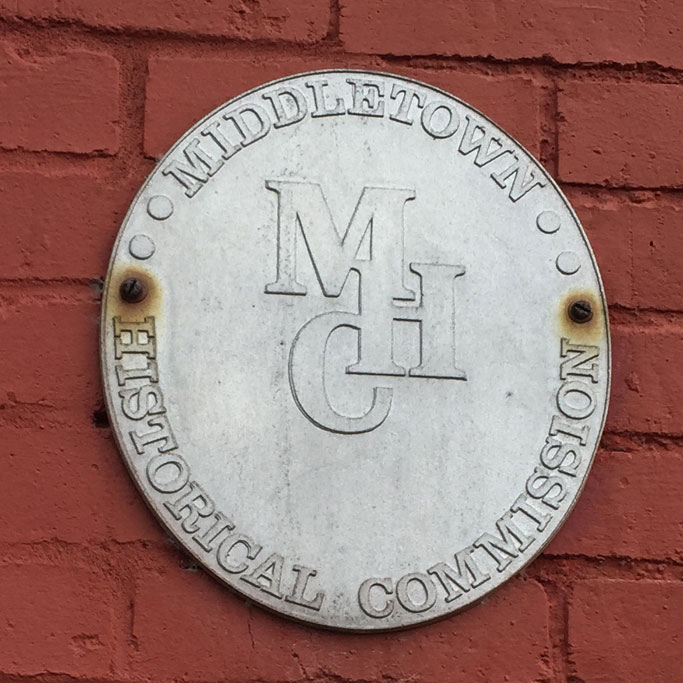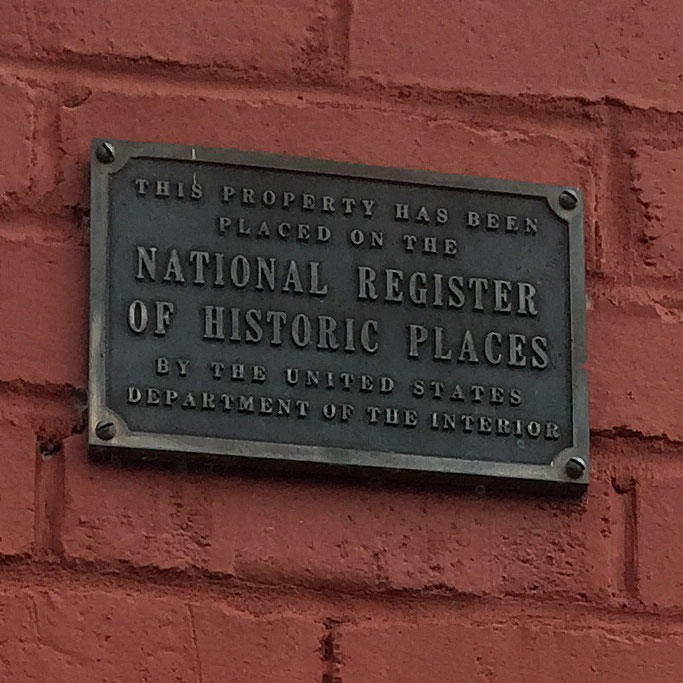our history
Built by a close-knit community of Jewish settlers, B'nai Jacob Synagogue in Middletown reflects the heritage of its founders and stands as Dauphin County's oldest continuously used synagogue.
Founding and Legacy of B'nai Jacob Synagogue: A Testament to Middletown's Early Jewish Community
Research about the synagogue’s history shows that before the end of the 19th century, principal centers of Jewish population in America were concentrated in large urban areas.
According to documents submitted to obtain the historic designation, Jews began to settle in towns in search of new lives and opportunities. These small towns offered the atmosphere which they left behind in the European homelands. Strictly governed by orthodox Hebrew law (close proximity to the house of worship and mandated quorums), Jews found it necessary to form communities quickly so synagogues could be established.
These factors resulted in the erection in 1906 of B’nai Jacob as Middletown’s first and only synagogue. The building was designed and personally constructed by its charter members. Middletown was selected for the establishment of a Jewish community because it was on the main line of the Pennsylvania Railroad. This made easier transportation access for friends and family in the major metropolitan centers. It also was selected because of the closeness of Harrisburg, which could offer back-up employment if the families’ trade (peddlers, shoemakers, tailors) failed.
During the early years of the 1900s there were about 20 Jewish families who had settled in Middletown. Established in 1755, it was incorporated in 1829 and became a rural farming and trading center.
Many of the Jews were “landslait”–people who came from the same region, from small towns in Lithuania, and places like Middletown had much the same atmosphere as the places they left.
They were peddlers, junk dealers, shoemakers or grocers and, like Jews everywhere, they looked for comfort and social warmth in the concept of a shul.
Early services were held in the home of Yoel and Ida Hervitz and then the community began to plan the building of the shul on Nissley and Water Streets.
Rose Hervitz Kahn recalls, “My mother was ahead of her time! She brown bagged my father’s lunch every day while he was helping to dig the foundation.”
It was a joyous day in 1906 when the building was completed. Today, it is the oldest building erected as a synagogue in Dauphin County, which has been in continuous use.
B’nai Jacob Synagogue is a very simple and refined one story house of worship, which, when constructed, was probably the religious counterpart to the traditional one room schoolhouse. The front gabled end facade is distinguished by brick recessed panels within which are placed pointed arch windows and capped with Star of David ornament. All windows are pointed arch and contain leaded stained glass. The interior contains an entrance area, one large room as the auditorium and balcony, a small ante-room and basement. The interior remains unaltered since the time of the Synagogue’s construction, with the exception of the aisles which have been carpeted. The auditorium features original brass light fixtures and center chandelier wainscoting on the walls, carved wooden balcony railings and central Bimah, being the focal worship area. Also significant is the holy ark, containing the Torah, which is supported by the neo-classical case of columns and entablature.
The pews came from an earlier version of the Dauphin County Courthouse. B’nai Jacob’s Torahs are over 200 years old, but Arthur Berman says, “My grandmother, Leah Krauss, bought the first Torah and it is still there.”
Arthur, an attorney, was born and raised in Middletown and had his bar mitzvah at B’nai Jacob. His father, Maurice Berman, was the first secretary/treasurer of the congregation. He continues, “The Jews in Middletown were quite observant and very close to the shul which was the scene of all social activity, as well as the activities centered around the Jewish holiday calendar. On Saturday afternoons, the women would come to our home to visit my mother. I remember a visiting rabbi from Palestine and I can recall the excitement of the evening we burned the mortgage.”
Rose Kahn adds, “B’nai Jacob had a mikvah and a shochet was attached — and a cheder! My father wanted to see girls included in the Hebrew school because girls had to learn to “daven” (pray) also.”
The charter members in 1906 were Abe Baker, Maurice Berman, Joseph Blumson, David Blumson, Isaac Blumson, Isaac Closter, Israel Cohen, Albert Cohen, Sam Cohen, Yoel Hervitz, Simon Klawansky, Simon Kramer, Max Krauss, Sam Payne, Samuel Proser, Albert Prouser, Sam Prouser, Joseph Puvlonsky, David Singer, Philip Singer, Meyer Yoffee, Chaim Labe Zook and Eliezer Zacks.
As the Middletown area lost its rural character, more people moved away and joined the larger synagogues in Harrisburg. Members of the original families began the effort necessary to have the B’nai Jacob Synagogue placed on the National Register of Historic Places, the official record of sites and buildings worthy of preservation. The honor giving B’nai Jacob national recognition was awarded in 1985.



